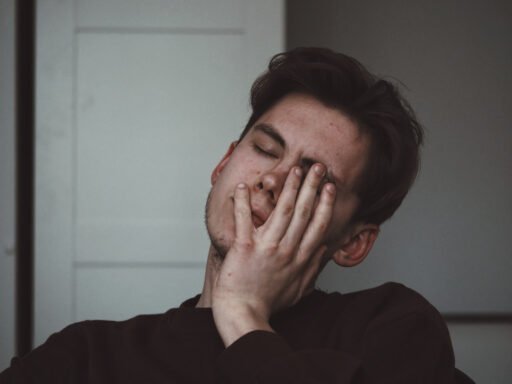If you’ve ever experienced racing thoughts, a pounding heart, or a tightness in your chest, then you might be familiar with the overwhelming sensations that anxiety brings. It can be unnerving, leaving you feeling trapped and consumed by worry. In this article, we will explore the diverse manifestations of anxiety symptoms, shedding light on the physical, emotional, and cognitive aspects that shape this often misunderstood condition. By gaining a deeper understanding of anxiety symptoms, you can begin to navigate through your own experiences with empathy and compassion.
What is Anxiety?
Anxiety is a natural response to stress or a perceived threat. It is a normal and necessary emotion that helps us navigate through challenging situations. However, when anxiety becomes excessive and begins to interfere with daily life, it may indicate the presence of an anxiety disorder. Anxiety disorders are a group of mental health conditions characterized by intense and persistent feelings of fear, worry, and apprehension.
Definition
Anxiety is often described as a feeling of unease, nervousness, or worry. It manifests both physically and mentally, affecting an individual’s thoughts, emotions, and behaviors. Anxiety can range from mild and temporary to severe and chronic, and it can vary in intensity and duration from person to person. While it is normal to experience anxiety in certain situations, such as before a big presentation or a job interview, anxiety disorders involve excessive and irrational fear or worry that is disproportionate to the situation.
Types of Anxiety Disorders
There are several different types of anxiety disorders, each with its own unique set of symptoms and characteristics. Some of the most common types include generalized anxiety disorder (GAD), panic disorder, social anxiety disorder, post-traumatic stress disorder (PTSD), and obsessive-compulsive disorder (OCD).
Physical Symptoms of Anxiety
Anxiety can have a profound impact on the body, leading to various physical symptoms. These symptoms often stem from the body’s natural “fight or flight” response, which is triggered when we perceive a threat. Some of the common physical symptoms of anxiety include:
Increased Heart Rate
One of the most noticeable physical symptoms of anxiety is an increased heart rate. When you are anxious, your body releases stress hormones that cause your heart to beat faster in order to pump more blood to your muscles.
Rapid Breathing
Anxiety often leads to rapid and shallow breathing. This quickened breathing pattern is a result of the body’s attempt to take in more oxygen in preparation for a potential threat.
Muscle Tension
Muscle tension is another physical symptom of anxiety. When you are anxious, your muscles may become tense and tight, especially in areas such as the neck, shoulders, and back. This tension can lead to discomfort and even pain.
Sweating
Anxiety can cause excessive sweating due to the body’s increased activation of the sweat glands. This can be particularly bothersome and embarrassing for individuals experiencing anxiety in social situations.
Nausea
Feeling nauseous or having an upset stomach is a common physical symptom of anxiety. The stress response triggered by anxiety can affect the digestive system, leading to feelings of queasiness or even stomach pain.
Headaches
Many people with anxiety experience headaches or migraines. These headaches can range from mild to severe and may be accompanied by other symptoms such as light sensitivity or noise sensitivity.
Fatigue
Anxiety can be mentally and physically draining, leading to feelings of fatigue and exhaustion. The constant worrying, racing thoughts, and physical symptoms can leave individuals feeling drained and lacking energy.
Psychological Symptoms of Anxiety
In addition to the physical symptoms, anxiety can also profoundly affect an individual’s mental and emotional well-being. The psychological symptoms of anxiety can be just as distressing as the physical ones. Some of the common psychological symptoms of anxiety include:
Excessive Worry
Anxiety often involves excessive and persistent worrying, even about things that may seem trivial to others. This worry can be all-consuming and difficult to control, disrupting daily life and causing significant distress.
Restlessness
Feeling restless or on edge is a common psychological symptom of anxiety. Individuals with anxiety may have a constant sense of agitation or the inability to relax, leading to a feeling of restlessness.
Irritability
Anxiety can make individuals more irritable and easily provoked. Small annoyances or frustrations may trigger intense irritability and anger, causing strained relationships and social difficulties.
Difficulty Concentrating
When anxiety is present, it can be challenging to concentrate and focus on tasks. Racing thoughts, worry, and feeling overwhelmed can make it difficult to pay attention and complete daily activities.
Feeling On Edge
People with anxiety often report feeling constantly on edge or anticipating something bad to happen. This constant sense of impending doom can be exhausting and contribute to the overall anxiety experience.
Sleep Problems
Anxiety frequently disrupts sleep patterns, leading to difficulties falling asleep, staying asleep, or experiencing restful sleep. Insomnia is a common issue for individuals with anxiety, exacerbating the cycle of anxiety and sleep disturbances.
Panic Attacks
Panic attacks are intense episodes of fear and physical discomfort that typically reach their peak within minutes. These attacks can be highly distressing and may involve symptoms such as a rapid heartbeat, shortness of breath, chest pain, and a sense of impending doom.
Behavioral Symptoms of Anxiety
Anxiety often manifests in observable behaviors that can be classified as behavioral symptoms. These behaviors are often a direct result of the individual’s attempts to manage or relieve their anxiety. Some of the common behavioral symptoms of anxiety include:
Avoidance
People with anxiety may engage in avoidance behaviors to minimize or eliminate situations or triggers that provoke anxiety. This can involve avoiding places, people, or activities that induce fear or discomfort.
Compulsive Behaviors
Compulsive behaviors are repetitive actions or rituals that individuals with anxiety engage in to alleviate anxiety or prevent something bad from happening. These behaviors often provide temporary relief but can become obsessive and significantly disrupt daily functioning.
Changes in Appetite
Anxiety can have an impact on a person’s appetite, leading to changes in eating patterns. Some individuals may have a reduced appetite and lose weight, while others may turn to food for comfort and experience an increase in appetite and weight gain.
Substance Abuse
Some individuals with anxiety may turn to substances such as alcohol or drugs as a way to cope with their symptoms. Substance abuse can provide temporary relief but can ultimately worsen anxiety symptoms and create additional problems.
Social Withdrawal
Anxiety can lead to social withdrawal, as individuals may fear judgment or embarrassment in social situations. They may isolate themselves and avoid social interactions, which can impact relationships and overall well-being.
Procrastination
Procrastination is a common behavioral symptom of anxiety. The fear of failure or the overwhelming nature of certain tasks can lead individuals to delay or avoid completing them, resulting in increased anxiety and stress.

Anxiety Symptoms of Generalized Anxiety Disorder (GAD)
Generalized Anxiety Disorder (GAD) is a common anxiety disorder characterized by excessive and persistent worry and anxiety about various aspects of life. Some of the common symptoms of GAD include:
Excessive Anxiety and Worry
Individuals with GAD experience excessive anxiety and worry about a wide range of issues, such as health, work, relationships, and finances. This worry is often difficult to control and can occur more days than not for at least six months.
Restlessness
Restlessness is a common symptom of GAD. Individuals with GAD often feel on edge, unable to relax, and may experience physical symptoms of restlessness like fidgeting or being unable to sit still.
Easily Fatigued
Anxiety can be mentally and physically exhausting, resulting in feelings of fatigue and low energy. Individuals with GAD may find it difficult to maintain their usual levels of energy and may feel tired or drained.
Difficulty Concentrating
GAD can make it challenging to concentrate and stay focused. Worrying thoughts and an overall sense of unease can make it difficult to pay attention, leading to difficulties with work, school, or other tasks requiring concentration.
Irritability
Irritability is a symptom commonly seen in individuals with GAD. The constant worry and stress can make individuals more prone to irritability and frustration, leading to conflicts in interpersonal relationships.
Muscle Tension
Muscle tension is a physical symptom often experienced by people with GAD. The constant state of anxiety and worry can cause muscle tension, particularly in the neck, shoulders, and back.
Sleep Problems
GAD frequently disrupts sleep patterns, leading to difficulties falling asleep, staying asleep, or experiencing restful sleep. Insomnia and restless sleep are common issues for individuals with GAD.
Anxiety Symptoms of Panic Disorder
Panic Disorder is an anxiety disorder characterized by recurrent and unexpected panic attacks. These attacks are intense and accompanied by a wide range of physical and psychological symptoms. Some of the common symptoms of panic disorder include:
Frequent Panic Attacks
Panic Disorder is defined by recurrent and unexpected panic attacks. These attacks can occur suddenly, without any apparent trigger, and reach their peak within minutes. The frequency of panic attacks is a key diagnostic criterion for Panic Disorder.
Sudden Intense Fear
Panic attacks involve a sudden and intense fear or terror. This fear can be overwhelming and appear out of proportion to the current situation. Panic attacks often leave individuals feeling out of control and fearful of another attack occurring.
Heart Palpitations
Heart palpitations are a common symptom experienced during panic attacks. Individuals may feel their heart racing or pounding, accompanied by a sense of impending doom. The rapid heartbeat can be distressing and contribute to feelings of anxiety and panic.
Sweating
Excessive sweating is a physical symptom often associated with panic attacks. Sweating can be profuse and noticeable, leading to feelings of embarrassment or discomfort in social situations.
Shortness of Breath
During a panic attack, individuals may experience shortness of breath or a sense of being unable to catch their breath. This can be distressing and may even cause individuals to fear suffocation or a lack of oxygen.
Chest Pain
Chest pain or discomfort is a common symptom of panic attacks. Individuals may experience tightness or pressure in the chest, mimicking symptoms of a heart attack. It is important to note that chest pain should always be evaluated by a medical professional to rule out any physical causes.
Fear of Losing Control
Many individuals with panic disorder experience a fear of losing control or going crazy during a panic attack. This fear often stems from the intense and overwhelming physical and psychological symptoms experienced during an attack.

Anxiety Symptoms of Social Anxiety Disorder
Social Anxiety Disorder, also known as social phobia, is an anxiety disorder characterized by an intense fear of social situations. Individuals with social anxiety disorder often fear being judged or embarrassed, leading to avoidance of social events. Some of the common symptoms of social anxiety disorder include:
Intense Fear of Social Situations
Individuals with social anxiety disorder experience a persistent and intense fear of social situations. Everyday activities such as meeting new people, speaking in public, or eating in front of others can provoke extreme anxiety and distress.
Fear of Being Judged
The fear of being judged by others is a hallmark symptom of social anxiety disorder. Individuals with social anxiety frequently worry about being perceived as awkward, incompetent, or embarrassing, which can significantly impact their self-confidence and self-esteem.
Avoidance of Social Events
To minimize anxiety and potential embarrassment, individuals with social anxiety often avoid social events or situations. This avoidance can lead to isolation and a decreased quality of life.
Blushing
Blushing is a common physical symptom experienced by individuals with social anxiety disorder. The fear of blushing or being seen as visibly anxious can intensify feelings of self-consciousness and contribute to social avoidance.
Trembling
Trembling or shaking is another physical symptom often seen in social anxiety disorder. Individuals may experience trembling hands, voice, or even trembling throughout the body during social interactions.
Nausea
Feeling nauseous or having an upset stomach is a common physical symptom of social anxiety. The stress response triggered by social anxiety can affect the digestive system, leading to feelings of queasiness or even stomach pain.
Rapid Heartbeat
Increased heart rate is a common physical symptom experienced by individuals with social anxiety disorder. The fear and anxiety associated with social situations can cause the heart to pound, leading to discomfort and unease.
Anxiety Symptoms of Post-Traumatic Stress Disorder (PTSD)
Post-Traumatic Stress Disorder (PTSD) is an anxiety disorder that develops after experiencing or witnessing a traumatic event. PTSD can cause various symptoms that persist long after the traumatic event has occurred. Some of the common symptoms of PTSD include:
Intrusive Memories
Intrusive memories are one of the hallmark symptoms of PTSD. Individuals with PTSD may experience distressing memories, flashbacks, or nightmares about the traumatic event, often causing emotional distress and physical sensations associated with the event.
Flashbacks
Flashbacks are vivid and intrusive re-experiences of the traumatic event. Individuals with PTSD may feel as if they are reliving the traumatic experience, with their surroundings and sensations resembling those of the original event.
Nightmares
Nightmares related to the traumatic event are a common symptom of PTSD. These nightmares can be highly distressing and may cause individuals to dread falling asleep or experiencing sleep disturbances.
Avoidance of Triggers
Individuals with PTSD may go to great lengths to avoid reminders or triggers associated with the traumatic event. This avoidance can include avoiding specific places, people, conversations, or activities that remind them of the traumatic experience.
Hyperarousal
Hyperarousal refers to a state of increased vigilance and alertness. Individuals with PTSD may be constantly on guard and easily startled, as if anticipating another traumatic event.
Hypervigilance
Hypervigilance is another symptom of PTSD characterized by an intense and constant awareness of one’s surroundings. Individuals with PTSD may be hyperalert to potential threats, leading to a state of heightened anxiety and stress.
Detachment from Others
PTSD can cause individuals to feel emotionally detached or numb. They may have difficulty connecting with others or feel a sense of distance from their loved ones, resulting in feelings of isolation and social withdrawal.
Anxiety Symptoms of Obsessive-Compulsive Disorder (OCD)
Obsessive-Compulsive Disorder (OCD) is an anxiety disorder characterized by intrusive thoughts, obsessions, and compulsive behaviors. Individuals with OCD often experience irrational fears and a compelling need to engage in repetitive rituals or behaviors. Some of the common symptoms of OCD include:
Obsessions
Obsessions are persistent and intrusive thoughts, ideas, or images that cause distress. These thoughts are often irrational and can lead to intense anxiety or fear. Common obsessions may revolve around themes of contamination, harm, or perfection.
Compulsions
Compulsions are repetitive behaviors or mental acts that individuals with OCD perform in an attempt to alleviate anxiety or prevent something bad from happening. Compulsions may include rituals such as excessive handwashing, checking, or counting.
Fear of Contamination
Many individuals with OCD have a fear of contamination or germs. This fear can lead to excessive handwashing, avoidance of certain objects or places, and a heightened sense of cleanliness.
Excessive Cleanliness
Excessive cleanliness, also known as compulsive cleaning or washing, is a common compulsive behavior associated with OCD. Individuals may feel compelled to clean and sanitize their environment or belongings multiple times to alleviate anxiety.
Checking and Rechecking
Individuals with OCD often engage in excessive checking behaviors to alleviate their fears and doubts. This can include repeatedly checking locks, appliances, or personal belongings to ensure that they are secure or in their proper place.
Hoarding Tendencies
Hoarding tendencies are sometimes associated with OCD. Individuals may have difficulty discarding items or feel an overwhelming need to save and accumulate possessions, leading to excessive clutter and a loss of living space.
Intrusive Thoughts
Intrusive thoughts are unwanted and often disturbing thoughts that individuals with OCD experience. These thoughts can be violent, sexual, or against one’s moral or ethical values, causing significant distress and anxiety.
Conclusion of Anxiety Symptoms
If you are experiencing symptoms of anxiety, it is essential to seek professional help. Anxiety disorders can significantly impact your quality of life, but with the right treatment and support, it is possible to manage and overcome these challenges. A mental health professional can provide an accurate diagnosis and develop a tailored treatment plan to address your specific needs.
In addition to professional help, implementing self-care strategies is crucial in managing anxiety symptoms. Prioritizing self-care activities such as exercise, practicing relaxation techniques, getting adequate sleep, and maintaining a healthy lifestyle can all contribute to reducing anxiety.
Finally, don’t hesitate to seek support from your loved ones. Sharing your experiences and emotions with trusted friends and family members can provide comfort and understanding. Having a strong support system can make a significant difference in your journey towards managing and overcoming anxiety. Remember, you are not alone, and there is support available to help you navigate through anxiety and reclaim your well-being.
Frequently Asked Questions:
1. What are 5 signs you have anxiety?
- Signs of anxiety may include excessive worry, restlessness, fatigue, muscle tension, and difficulty concentrating. It’s essential to consult a professional for a comprehensive evaluation.
2. What is the 3 3 3 rule for anxiety?
- The 3 3 3 rule involves naming three things you see, hear, and feel, helping to ground yourself in the present and alleviate anxiety.
3. How can I calm my anxiety?
- Calming anxiety involves deep breathing, mindfulness, progressive muscle relaxation, and seeking professional guidance for coping strategies.
4. What beats anxiety?
- Effective anxiety management includes a combination of therapy, medication if prescribed, healthy lifestyle choices, and a strong support system.
5. Can anxiety go away on its own?
- While anxiety may improve, it’s advisable to seek professional help for sustained relief and to address the root causes.
6. How long does anxiety last?
- Anxiety duration varies. Short-term anxiety may be normal, but persistent or intense anxiety may require professional intervention.
7. What does 54321 mean?
- The 54321 technique involves focusing on five things you can see, four things you can touch, three things you can hear, two things you can smell, and one thing you can taste to manage anxiety.
8. What are 4 ways to reduce anxiety?
- To reduce anxiety, consider practicing mindfulness, engaging in regular physical activity, maintaining a balanced diet, and seeking support from loved ones or professionals.
9. How can I fix my anxiety naturally?
- Natural anxiety relief methods include exercise, proper sleep, mindfulness, herbal teas, and avoiding stimulants. Consult with a healthcare professional for personalized advice.
10. How to stop overthinking? – Overcoming overthinking involves recognizing negative thought patterns, challenging irrational thoughts, and practicing mindfulness and relaxation techniques.
11. Why do I suddenly have anxiety? – Sudden anxiety may be triggered by stress, life changes, or underlying mental health conditions. Identifying triggers and seeking professional help can provide insight.
12. Why won’t my anxiety go away? – Persistent anxiety may be linked to various factors. Consulting with a mental health professional can help identify the root causes and develop an effective treatment plan.
13. How do I train my brain to beat anxiety? – Cognitive-behavioral therapy (CBT) is a proven method to train your brain and address negative thought patterns associated with anxiety.
14. How do I feel normal again? – Feeling normal involves a holistic approach, including therapy, self-care, and lifestyle adjustments. Seeking professional guidance can be instrumental in reclaiming a sense of normalcy.


